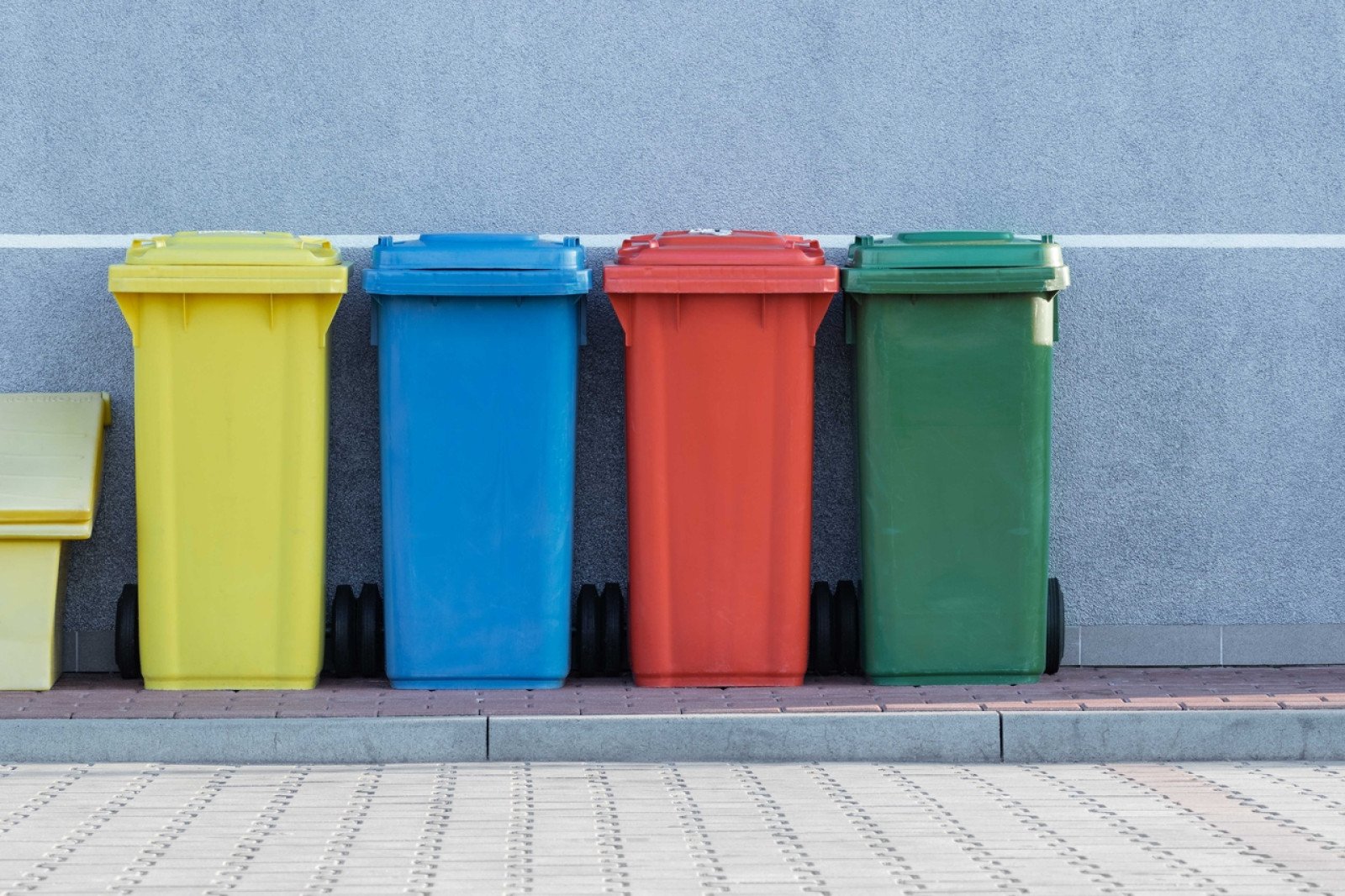Reduce, reuse, or recycle?
Use the law of conservation of mass to decide which waste management practice is the most sustainable.

Overview
The activity begins with an introduction to “The waste hierarchy” (reduce, reuse, and recycle) and a review of the law of conservation of mass. Tying these two concepts together, students assess the sustainability of the three practices. After reviewing the mechanical recycling process, students are introduced to chemical recycling. Students use this information and the criteria for a sustainable practice to re-evaluate the hierarchy of waste management.
Instructions
What you'll need
- Digital projector and screen
- "Rating waste management practices" worksheet, one for each student
- "Mechanical recycling of plastic" handout, one per group
- "Which practice is the most sustainable" slides
- Provide each of your students with a copy of the "Rating waste management practices" worksheet. Open up the "Which practice is the most sustainable" slides and show slides 2 and 3. Review the waste management hierarchy with your students.
- Ask your students to rate the three practices: which is the most sustainable? Prompt your students to note their initial rating in the left-hand column of the worksheet, and their reasons in the right-hand column.
- Briefly explain that the challenge of this activity is to use scientific thinking to determine which waste management practice is the most sustainable. Invite students to share their ratings and thinking with the class. As they share, use their ideas to co-develop or present the criteria for a sustainable practice:
- Convenient (easy to implement in day to day life)
- Requires less energy
- Produces less physical and chemical waste
- Doesn’t require non-renewable energy sources or sources that contribute to climate change
- Organize your students into small groups (2-4 students) and display slide 4. Ask groups to decide which statement most accurately describes the Law of Conservation of Mass. Invite groups to suggest how the law might help them decide which waste management practice is the most sustainable.
- Show slides 5 and 6, and ask groups to decide which waste management practice, reuse or reduce, is the most sustainable. Invite groups to share their decisions and thinking with the class.
- Display slide 7, and prompt students to revisit their worksheets and their initial rating. Ask students to rank the three waste management practices, and support their ratings with evidence.
- Show slides 9 and 10 to introduce the concept of open-loop recycling and mechanical recycling. Ask groups to decide how well mechanical recycling meets the criteria for a sustainable practice.
- Display slide 11 and 12 and introduce the concept of closed-loop recycling and chemical recycling. Use appropriate vocabulary to describe a sample chemical reaction that can be used in place of mechanical recycling. Ask groups to decide which is the most sustainable: chemical or mechanical recycling.
- Conclude the activity by showing slide 13 and asking groups to use their worksheet to complete a final ranking of the three waste management practices. Invite groups to share their rankings and evidence, reminding them to use the criteria to guide their thinking.
Modify or extend this activity
Extension
- Provide students time to justify or revise the 3R hierarchy. Students could create their own sustainable practice, such as “reject” or “repurpose”.
Curriculum Fit
Chemistry 11
Big Idea:
- Matter and energy are conserved in chemical reactions.
Content
- Reactions
- Local and other chemical processes
- Green chemistry
Curricular competencies
Questioning and predicting
- Demonstrate a sustained intellectual curiosity about a scientific topic or problem of personal, local, or global interest
- Make observations aimed at identifying their own questions, including increasingly abstract ones, about the natural world
Processing and analyzing data and information
- Use knowledge of scientific concepts to draw conclusions that are consistent with evidence
- Analyze cause-and-effect relationships
Evaluating
- Demonstrate an awareness of assumptions, question information given, and identify bias in their own work and in primary and secondary sources
- Consider the changes in knowledge over time as tools and technologies have developed
- Consider social, ethical, and environmental implications of the findings from their own and others’ investigations
- Assess risks in the context of personal safety and social responsibility
Applying and innovating
- Contribute to finding solutions to problems at a local and/or global level through inquiry
- Implement multiple strategies to solve problems in real-life, applied, and conceptual situations
Communicating
- Communicate scientific ideas and information, and perhaps a suggested course of action, for a specific purpose and audience, constructing evidence-based arguments and using appropriate scientific language, conventions, and representations
Assessments
Assess your students’ ability to:
- Apply their understanding of the Law of Conservation of Mass to a real-world situation such as waste management.
- Recognize the importance of science in developing environmentally-friendly solutions that do not compromise quality of life standards.
- Provide scientific evidence to support their rankings.
- Use appropriate vocabulary and concepts including, Law of Conservation of Energy, energy consumption versus waste production, and hydrolysis reactions.







